I love a good sequel. But as much as people talk very highly of Spider-Man 2 or The Empire Strikes Back, it’s not that common for a sequel to actually rise above the original. That makes it remarkable when a sequel gets everything right. To me, Commander 2013 is remarkable.
The original Commander product had come out in the summer of 2011 and it was clear immediately that Wizards had struck gold, but unfortunately they had not planned for a 2012 product. So with two years of design time, what we got was a product that highlighted the three color shards and quite possibly one of the most commonly underrated Commander products.
For better or worse, each of these decks brought something to the table that sculpted the identity of their respective shards. Today, we will be evaluating each of the legendary creatures that premiered in Magic the Gathering: Commander 2013. I will be basing my analysis on the reception these generals received at the time, how they created or supported an archetype, and answer if they maintained any sustained usage. To maintain some structure, we’ll group each duo into the decks they premiered in.
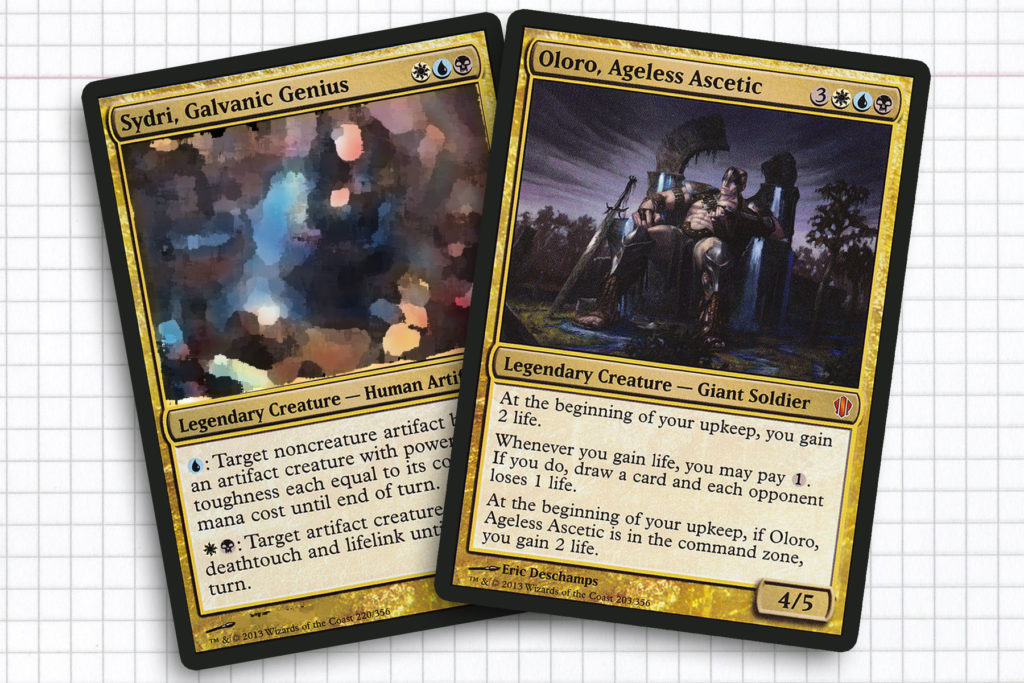
Eternal Bargain
Nearly every deck from this product had an extremely popular general come out of it, but I don’t know that any could compete with the notorious Oloro, Ageless Ascetic. Oloro was very unique for the time, being a general who could influence games without ever being cast. He would eventually lead to Eminence, which I’ve expressed my opinions on before. At the time of being previewed, Oloro felt rather benign; it wouldn’t be until the idea he represented took shape and decks contorted around pillow-forting until defeat felt unobtainable that the problem became very apparent. As the second most played Esper general currently, Oloro has never really gone away, being a constant threat that a player could use at just about any game night.
Sydri, Galvanic Genius is a legendary creature I’ve all but forgotten about. While the image of the card made me recall how Sydri put Caltrops on the map for a few months, the possibilities presented by the card never lived up to the hype. While she currently edges out Sharuum the Hegemon, there’s more personal notoriety for the artifact sphinx, as Sharuum herself can be a piece of an artifact combo deck. Of course, the unbiased stats collected by EDHrec speak to the fact that people do still use Sydri enough to keep her in the top ten Esper generals.
Examining Eternal Bargain highlights that Esper has seemingly grown away from an artifact identity it had for a long time. While Alela, Artful Provocateur sits at the top, she doesn’t explicitly require an artifact strategy to work. I wonder if Breya, Etherium Shaper is responsible for or reflective of this shift to move Esper away from its artifact identity in Shards of Alara.
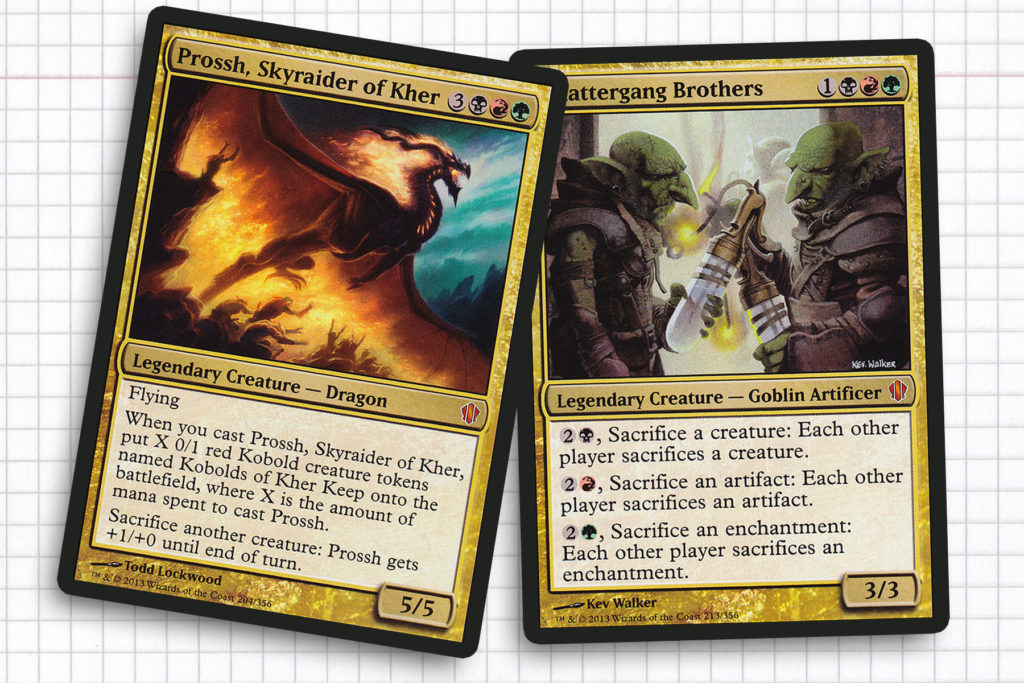
Power Hungry
The Power Hungry deck was my personal favorite from the set. With it came Prossh, Skyraider of Kher, who unlike the other generals I’m profiling today, was not interested in the long game. The speed by which the deck might churn out a win via Commander damage was breakneck. Prossh was an overall small blip on the radar of the metagames I witnessed, being a problem for the better part of three months before slowly dying in popularity. Today, Prossh is still relatively popular, though as the third most used Jund commander, it’s miles behind Korvold, Fae-Cursed King and Lord Windgrace. But they don’t carry the same level of infamy that did during the initial release.
Unlike Prossh, Shattergang Brothers made an immediate impact on me from the moment I opened the preconstructed deck. I think for the most part, I was in the minority; the Shattergang didn’t seem to take off until years later, when people had time to rediscover them. Part of where the Shattergang initially fell short was the fluctuating importance artifacts and enchantments can have in a game. It is entirely possible that you won’t activate two of their abilities in a game.
Once you divorce yourself from needing to use your general’s abilities and keep them more as the final trick that’s been in plain sight all along, the Shattergang Brothers become much more interesting. I have dug myself out of a lot of losing situations by suddenly assessing my creatures and artifacts to the point of sacrificing my okay to great cards in an effort to thin an opponent’s ranks all the way up to the utility creatures keeping them alive. The dynamic is what I believe keeps the general lurking in the corners of unsuspecting metagames.
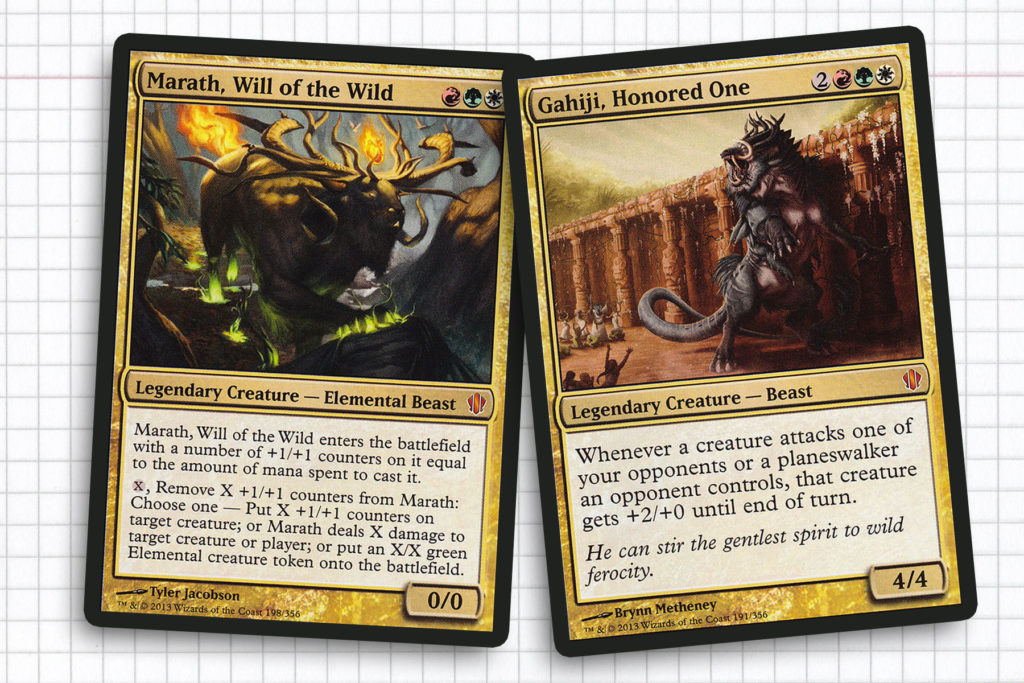
Nature of the Beast
Nature of the Beast is my least explored deck of the product, as the Naya shard was not something that especially excited me or anyone I commonly played against during the time Commander 2013 premiered. Playing against Marath, Will of the Wild always reminded me of Ghave, Guru of Spores, as both tended to be combo-heavy. That said, the design of Marath caring about the amount of mana used to cast it put it above Ghave. I wouldn’t be surprised if the two year gap meant that many Abzan decks got reconfigured into Naya builds.
I find the design of Gahiji, Honored One to be unfortunately underrated. There’s a very strong political tilt that was correctly identified at the time and still has its fans today. But unfortunately I don’t feel like this Gahiji hit the mark that it really ought to have. The deck brought long-forgotten cards like Varchild’s War-Riders and Mercy Killing into my playgroup and created a very political arms race, even if only for a few months. But I never find players discovering Gahiji now, only those who have been curating it all these years.
Unfortunately, as I theorized while putting together this article, my inclination that neither of the Naya generals have retained any staying power is most correct. Marath still sits in the top ten of the most popular Naya generals, but their presence has never been especially strong. I think both Marath and Gahiji have merit, but that they don’t stand as pillars of an archetype within Naya like some of our previous spotlights have. This has caused them to be lost to history in some sense.
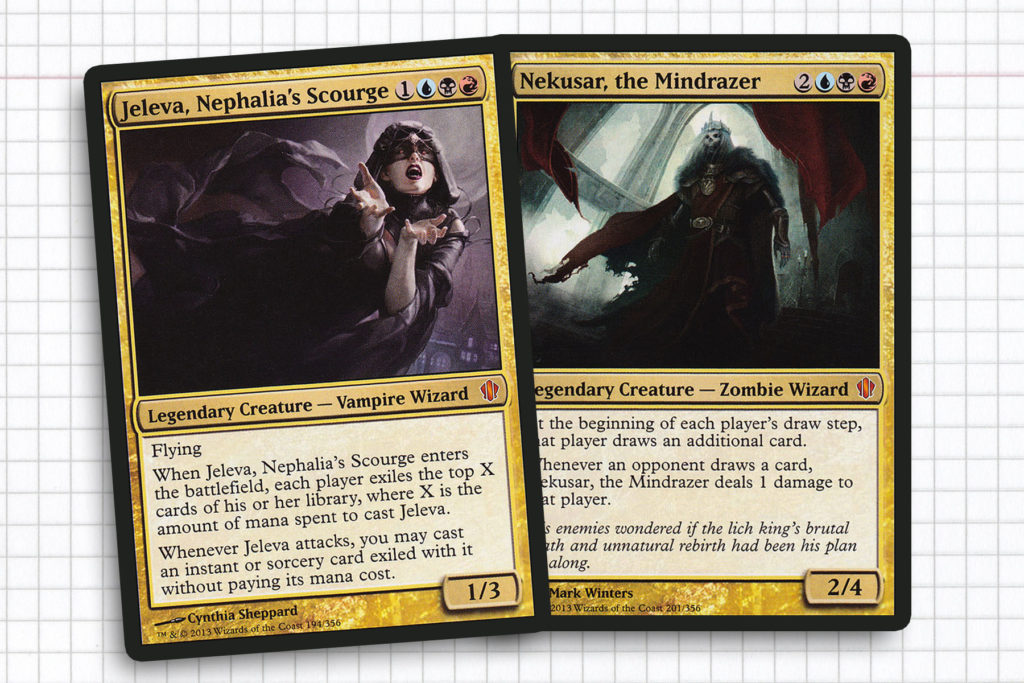
Mind Seize
Due to this deck housing True-Name Nemesis, I had multiple copies of this product lying around, simply because I could make up the entire cost of the deck with that one card. As such I had several copies of both Jeleva, Nephalia’s Scourge and Nekusar, the Mindrazer filling up space in my collection. Even for a lot of hype at the time, Jeleva never quite took off and I have to wonder if that comes from a slight misstep in her design. Jeleva feels like a relic of a different era of Commander, where big spells were much more common and the allure of getting to use the table’s spells was much more appealing.
The year prior to Commander 2013’s release featured Aurelia, the Warleader, Olivia Voldaren, Prime Speaker Zegana, and Talrand, Sky Summoner, which were either pushing the idea of more creature-focused strategies or inexpensive spells. Commander adopted these at the helm and within decks, further pushing for tight mana curves and pay off spells that normally took the form of creatures. As someone who had tried several times to make Jeleva work, there was always a better alternative in Grixis or an adjacent color identity.
Nekusar, the Mindrazer, by contrast, never faced this sense of being out of place. I’ve written about my love for Nekusar and my acceptance of his place as a villain of the format, but I can quite forget that first few moments after he was first previewed and the rush of excitement I got from the first linear build I unabashedly conceived. And I think it is really telling just how much Nekusar spoke to their audience as time has gone on, not only as the second most popular Grixis general, but the only non-marquee general of today’s bunch to outplace the marquee general in decks built. Nekusar undoubtedly fueled a lot of early turn wins for players, but I think inverting the classic pillow fort strategy and weaponizing the draw step was a remarkable design decision that has obviously paid off over the last seven years.
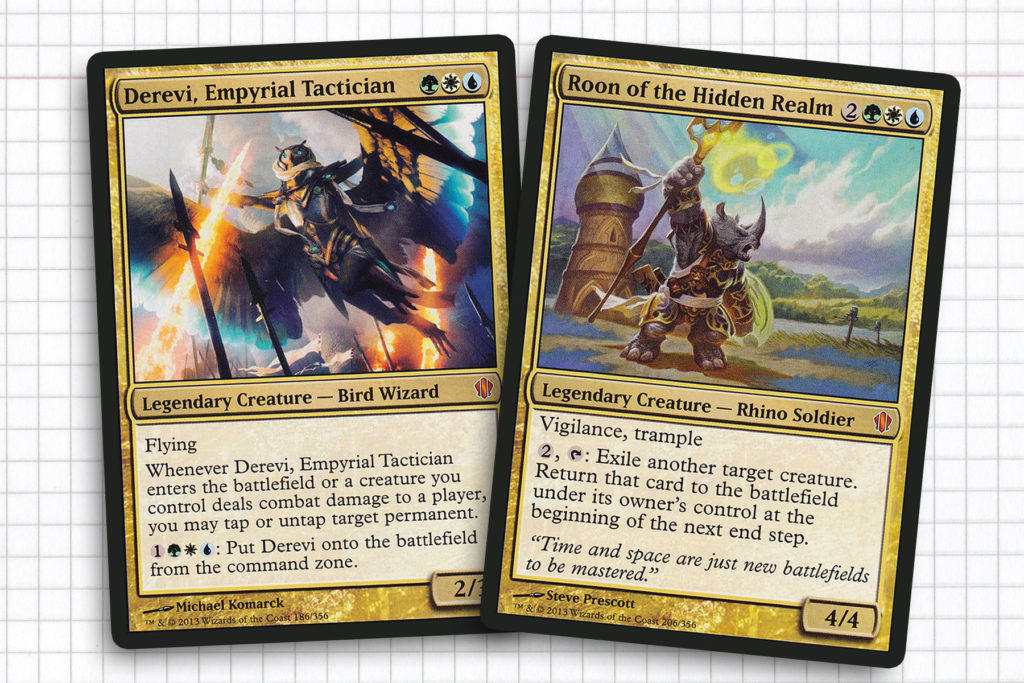
Evasive Maneuvers
Derevi, Empyrial Tactician features a design that I find rather remarkable. The ability to put a general into play for a fixed cost is alluring and I’m surprised it has not been mined more of the last few years. While I have not seen another Derevi deck in years, I would be inclined to believe she still holds a high place in the available Bant generals. Derevi was pretty quickly adopted for their ability to circumvent commander tax, while also playing towards a relatively fair control strategy. For players looking to win through combat without having a general that does a lot of good stuff and draws cards, Derevi, Empyrial Tactician is a fine option and I’m happy to know that I’m not the only one that enjoys her.
Finally, Roon of the Hidden Realm, a flicker general after my own heart. Roon was birthed into a metagame that had already seen the power of Deadeye Navigator, so the community knew that there was going to be something fruitful to do with a deck helmed by them. I believe Roon started with a lot of momentum, occupying a space between the aggro decks of the time lead by Rafiq of the Many and the group hug decks Phelddagrif was so well known for. Overall, the Bant deck was the right amount of fair and powerful, and I’m always delighted to see one of these two at the table.
Making my way back through this product, it’s funny just how many of the generals that came out of it were immediate metagame-shaping cards. Now that Standard-legal products are introducing generals that seem to immediately change what the metagame looks like, it feels laughable that we used to only see a condensed shift about once a year. Even if the average impact for new cards coming out of Commander 2013 hadn’t proven to be high, I really think the legendary creatures were all high quality for the audiences they were made for.
During our next installment in this series, we’ll be exploring the first time Wizards dipped their toes into planeswalkers as commanders. Look for that some time before the end of the year; I feel like I might have a lot to say for that one.
Ryan Sainio is a Graphic Designer who writes about EDH and the EDH community. He has been playing Magic: The Gathering since 7th Edition in 2002 and values flavorful and fun gameplay over competitively optimized decks.

